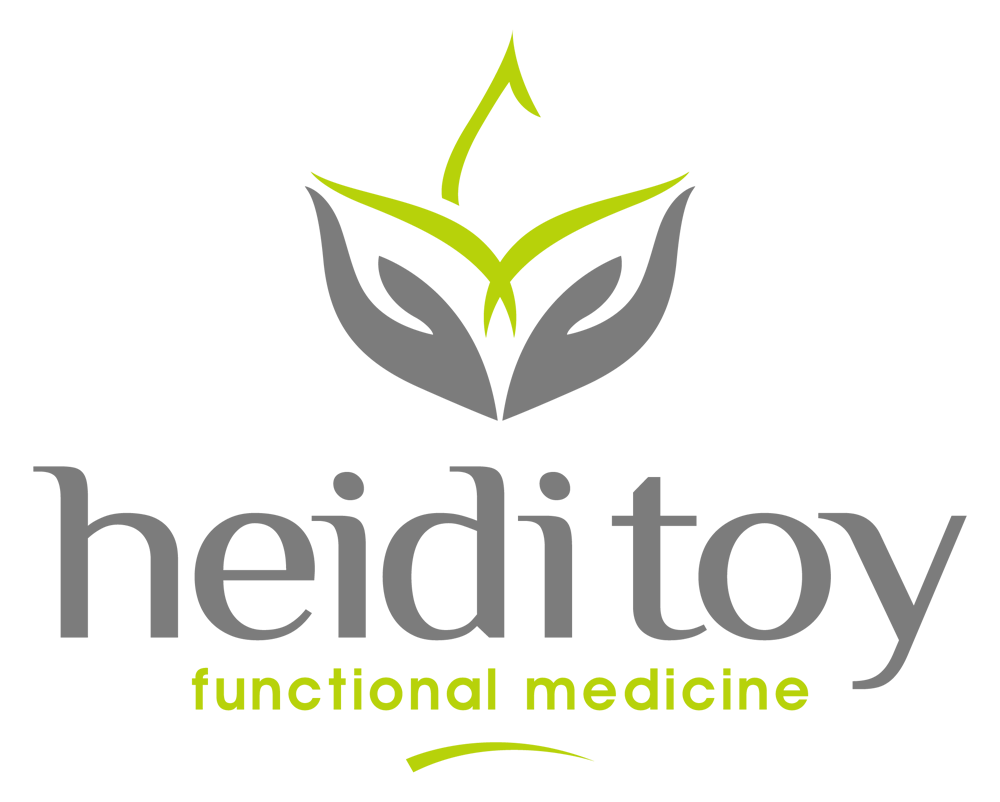Unlocking Thyroid Health: The Hidden Mineral Ratios You Need to Know
The thyroid is a small, butterfly-shaped gland located at the base of your neck, playing a critical role in regulating your body’s metabolism. Think of it as the thermostat of your body—it helps control how fast or slow your cells function. When your metabolism is too low, your brain initiates a hormonal response to "turn up the heat." When your metabolism is too high, thyroid hormones are deactivated to prevent overstimulation of the body.
The thyroid doesn’t operate in isolation. It communicates closely with your brain through a system called the Hypothalamic-Pituitary-Thyroid (HPT) axis. This network sends signals between the brain and the thyroid to maintain a balanced metabolism. When this system is working correctly, the thyroid helps keep your body’s processes—such as energy production, heart rate, and body temperature—in check.
What Is Hypo- and Hyperthyroidism?
A properly functioning thyroid responds effectively to changes in the body’s energy demands. But what happens when the thyroid becomes compromised? If the thyroid is impaired—due to stress, toxins, autoimmune damage, nutrient deficiencies, or other factors—every system in the body can be affected.
There are two main types of thyroid dysfunction: hypothyroidism and hyperthyroidism.
Hypothyroidism occurs when the thyroid doesn’t produce enough hormones, slowing down the metabolism. This can lead to symptoms like weight gain, fatigue, depression, and cold intolerance.
Hyperthyroidism occurs when the thyroid produces too many hormones, speeding up the metabolism. Symptoms include rapid weight loss, nervousness, excessive sweating, and heart palpitations.
Autoimmune diseases can also affect thyroid function. Hashimoto's thyroiditis often leads to hypothyroidism, while Graves' disease is a common cause of hyperthyroidism.
Thyroid Markers: A Detailed Look
A complete thyroid panel provides a more in-depth view of thyroid function beyond standard blood tests. Here are key markers to consider:
1. Thyroid Releasing Hormone (TRH): Produced by the hypothalamus in the brain, TRH signals the pituitary gland to release Thyroid Stimulating Hormone (TSH). If TRH is off, the entire thyroid hormone cascade may be disrupted.
2. Thyroid Stimulating Hormone (TSH): The standard marker in blood tests to assess thyroid function. High TSH suggests the thyroid isn’t responding to signals and needs more stimulation to produce hormones, while low TSH may indicate an overactive thyroid.
3. Total T4 and Total T3: These represent the total circulating thyroid hormones. T4 is the inactive form that the body converts into T3, the active form. These markers provide an overview of thyroid function.
4. Free T4 and Free T3: These measure the unbound hormones in the bloodstream that can signal the body’s cells. While total T4 and T3 indicate how much hormone is in the blood, the "free" levels show how much is available for use.
5. Thyroid Binding Globulin (TBG): This protein binds to thyroid hormones in the blood. Too much TBG can prevent free T4 and T3 from effectively signaling cells.
6. Thyroid Antibodies: Markers such as TPO, TG, and TSHR antibodies can identify autoimmune activity against the thyroid. Elevated antibodies often indicate the body is attacking the thyroid, sometimes before symptoms are apparent.
Beyond Blood Tests: The Calcium-Potassium (Ca/K) Ratio
While blood tests offer valuable insights, they don’t always tell the full story. This brings us to the calcium-potassium (Ca/K) ratio, a marker found in a Hair Tissue Mineral Analysis (HTMA) panel that acts as a "dashboard" for thyroid activity.
The ideal ratio is 4.2. When this ratio is off, it may suggest thyroid dysfunction—either underactive or overactive.
Calcium is regulated by thyroid hormones via calcitonin. When calcium levels are high, it often indicates the thyroid is underactive, leading to hypothyroid symptoms like weight gain, fatigue, and constipation.
Potassium plays a crucial role in how tissues respond to thyroid hormones. Low potassium levels can prevent normal thyroid hormone levels from entering cells effectively, causing symptoms of hypothyroidism, even if lab results appear normal.
High Ca/K Ratio: Signs of Cellular Hypothyroidism
An elevated Ca/K ratio indicates a sluggish thyroid. Symptoms might include:
- Weight gain
- Fatigue
- Dry skin
- Constipation
This imbalance suggests that potassium may be needed to support thyroid hormone activity. Copper toxicity may also contribute to thyroid dysfunction, especially if the Ca/K ratio climbs above 10, where copper toxicity becomes a more significant factor.
Low Ca/K Ratio: Signs of Cellular Hyperthyroidism
A low Ca/K ratio can signal hyperthyroidism, where the thyroid is overactive. Symptoms include:
- Excessive sweating
- Hyperactivity
- Anxiety
- Nervousness
It's important to recognize that this is a cellular process because it occurs at the cellular level. Some clients present these symptoms, and despite their doctors conducting thyroid tests through blood chemistry, the results often return normal. These clients leave feeling frustrated and still symptomatic. However, when we conduct hair tissue mineral testing, we often uncover significant findings.
Be cautious with calcium supplementation if you have a low Ca/K ratio, as too much calcium can slow down metabolism and worsen thyroid dysfunction symptoms.
It is important to work with a practitioner skilled in HTMA.
The HPA Axis and Its Impact on Thyroid Function
Thyroid health is closely linked to the Hypothalamic-Pituitary-Adrenal (HPA) axis, which regulates the body’s response to stress by releasing cortisol, the "stress hormone." A healthy HPA axis manages stress effectively, but chronic stress can lead to HPA dysfunction, sometimes referred to as “adrenal fatigue.”
When the body is under long-term stress, cortisol can interfere with the conversion of T4 (inactive thyroid hormone) into T3 (active thyroid hormone), exacerbating hypothyroid symptoms.
Hair Tissue Mineral Analysis (HTMA) assesses stress by evaluating mineral levels and ratios that are directly influenced by the body's response to stress. Chronic stress alters the balance of essential minerals, which HTMA can detect.
Conclusion: A Complete View of Thyroid Health
Understanding thyroid health requires more than just blood work. While blood tests provide a snapshot of hormone levels in circulation, they don’t always show how well those hormones are used by the body’s cells.
That’s where tools like the calcium-potassium (Ca/K) ratio from an HTMA come in. This ratio can offer additional insights beyond traditional blood tests. Whether you’re experiencing hypothyroidism or hyperthyroidism, considering both blood work and HTMA results will give you a fuller picture of what’s happening with your thyroid.
Don’t miss out on what’s coming next! If you’re serious about understanding your thyroid health and unlocking your body’s mineral balance, keep an eye on your inbox! Something huge is coming around Thanksgiving, and you won’t want to miss it—sign up for my newsletter to stay informed. Your thyroid health could be about to take a major turn for the better!
References
Thyroid Disease. Cleveland Clinic. https://my.clevelandclinic.org/health/diseases/8541-thyroid-disease
Jones, D. S., Bland, J. S., & Quinn, S. (2010). Textbook of Functional Medicine. Institute for Functional Medicine.
Gaby, A. R. (2017). Nutritional Medicine (2nd ed.). Fritz Perlberg Publishing.
Magnesium and Thyroid Health. Retrieved from: https://thyroidpharmacist.com/articles/new-studies-on-magnesium-and-thyroid-health/
Don't Miss Out On More!

Heidi Toy FNTP
I help people all over the world heal by identifying and treating the root cause of their body imbalances. Through diet and nutrition, I guide them towards wholeness and balanced lives.
Heidi Toy Functional Medicine Blog














































































































